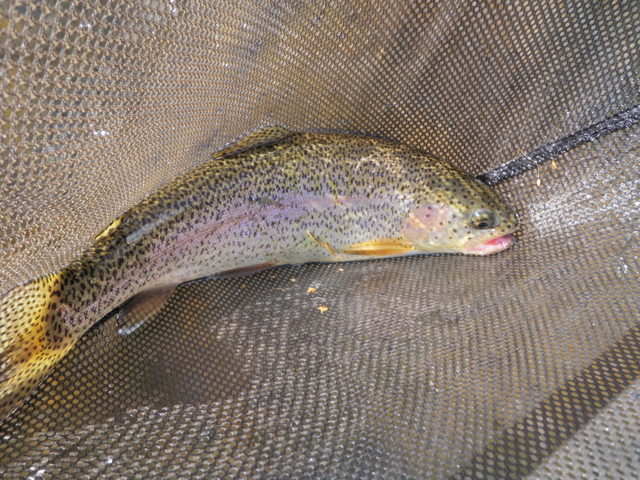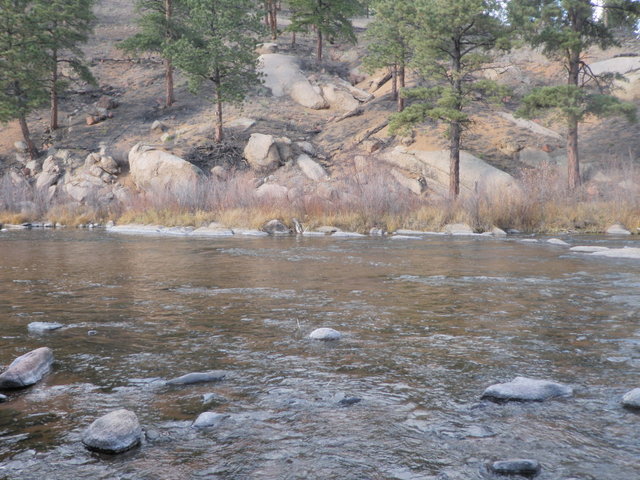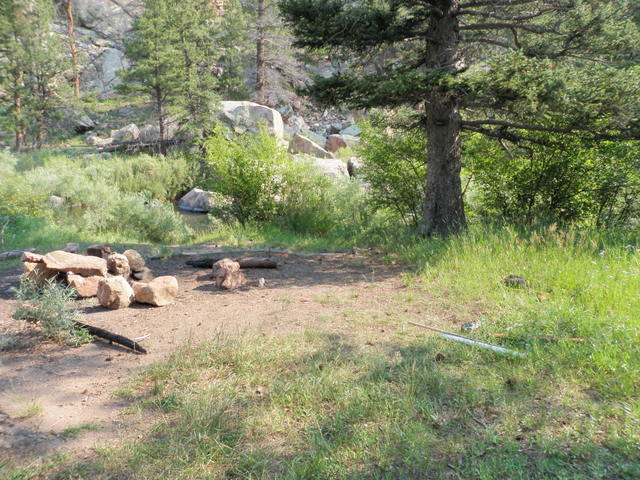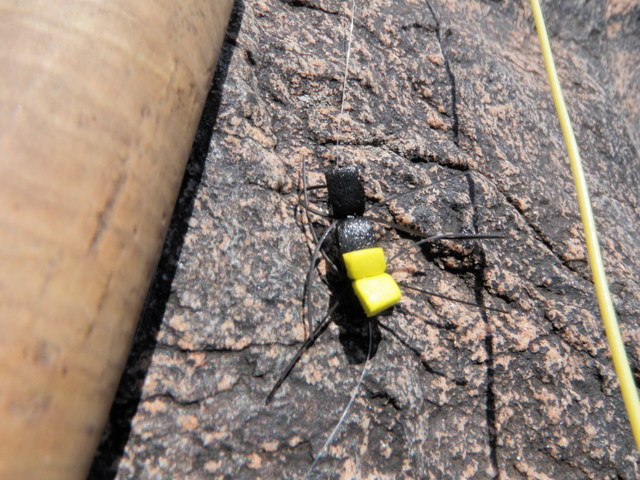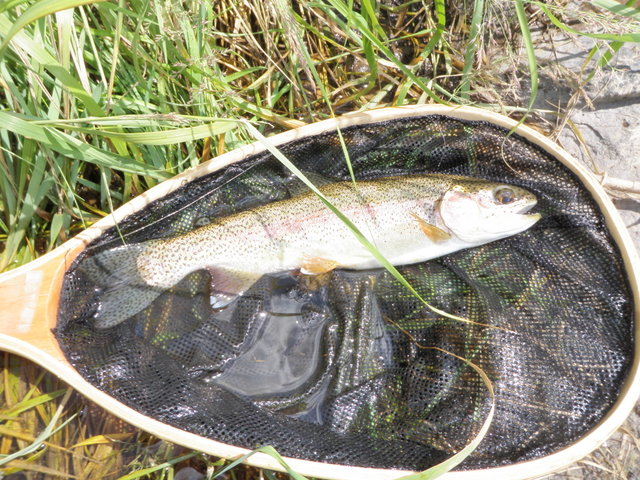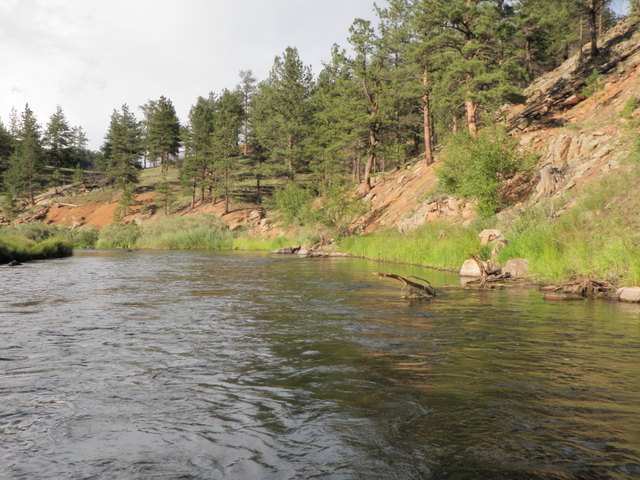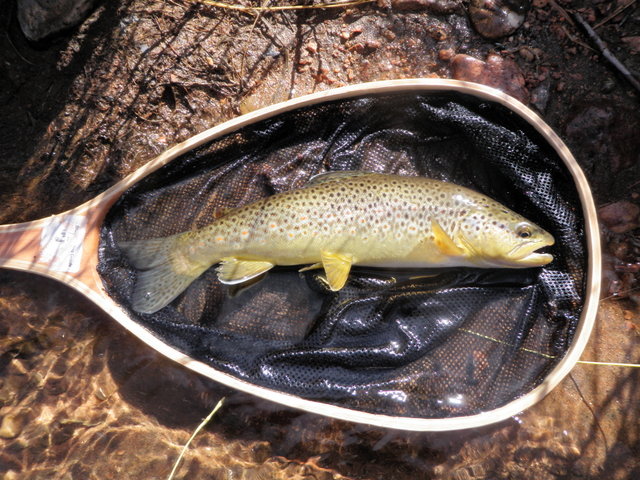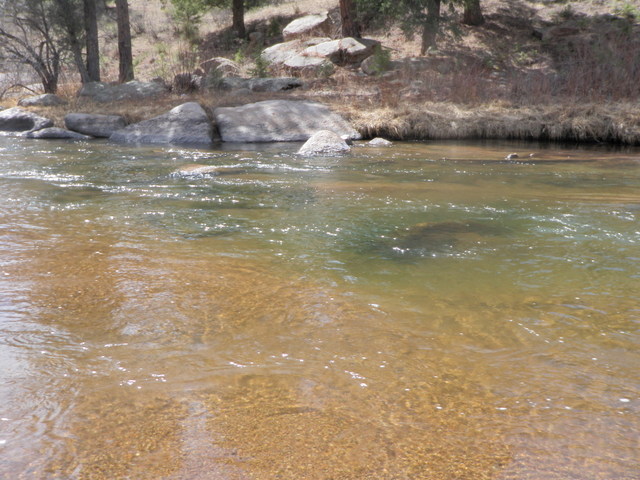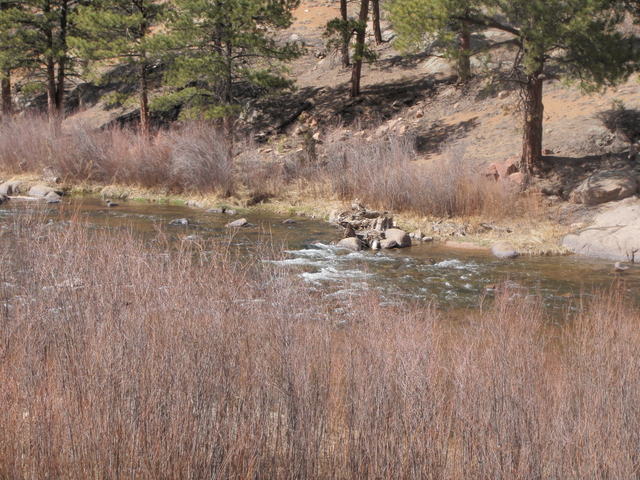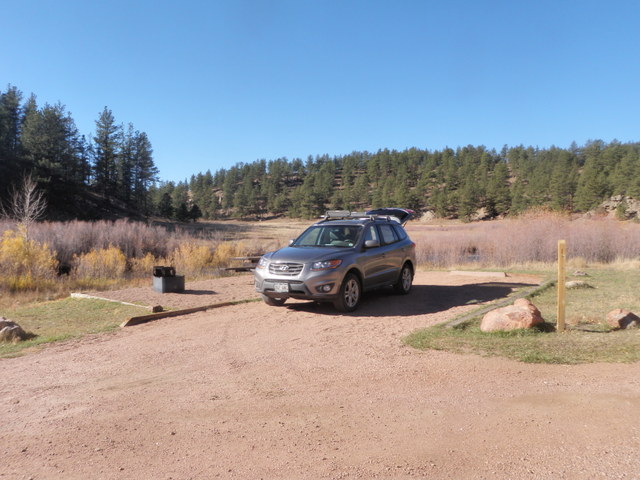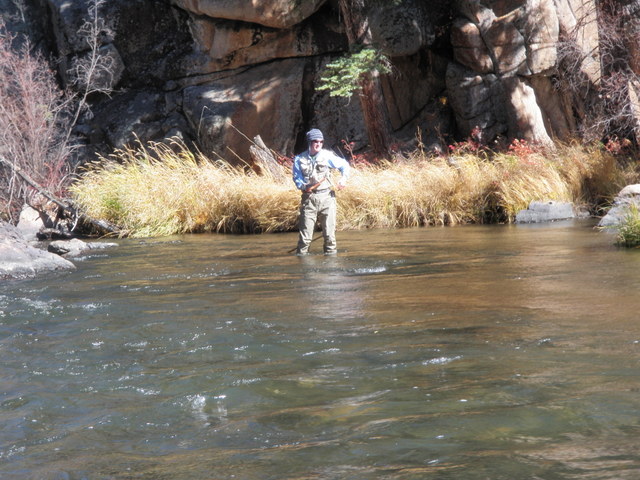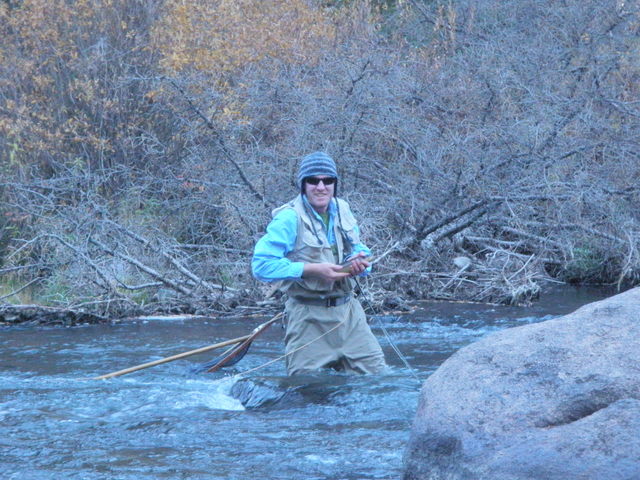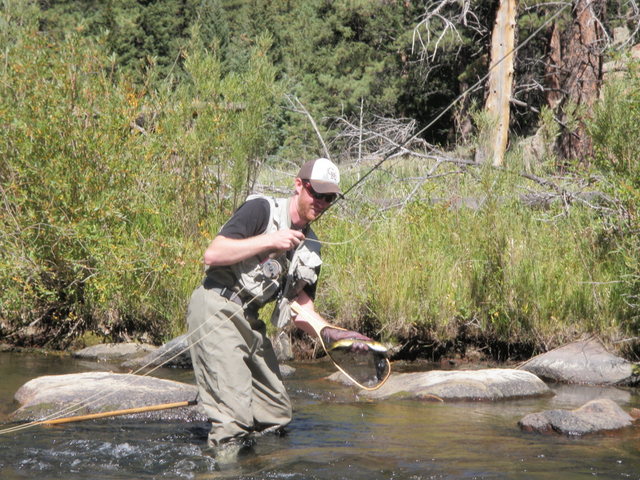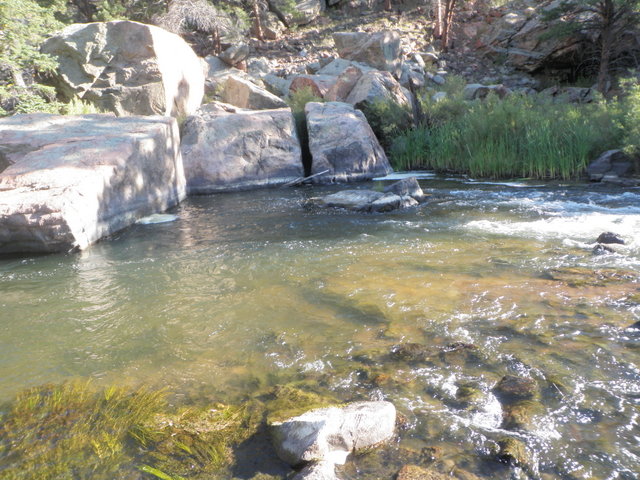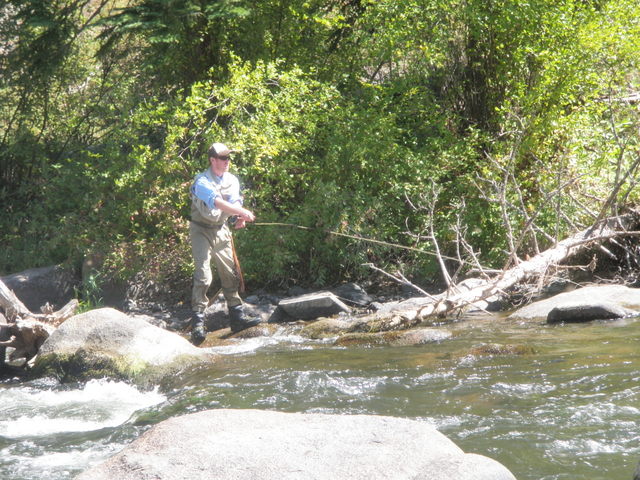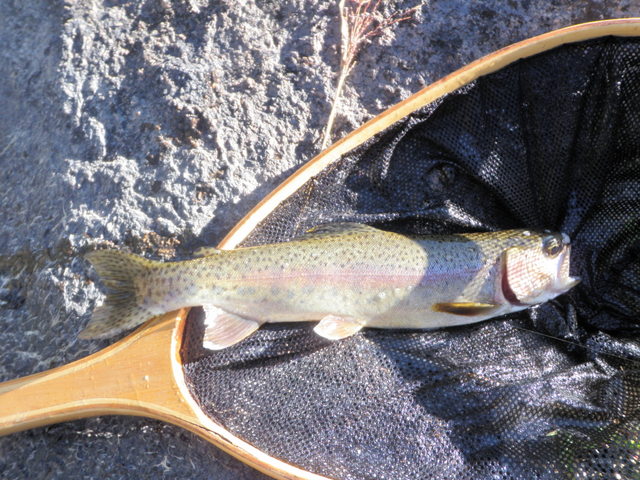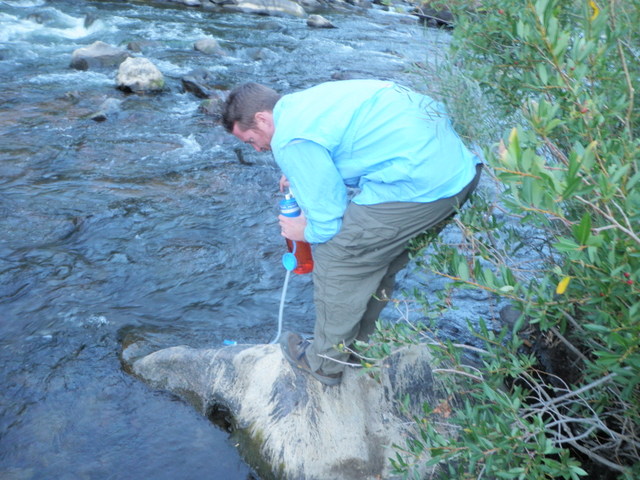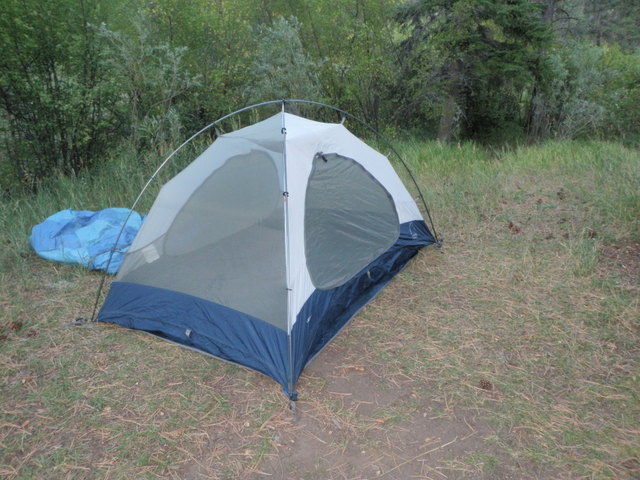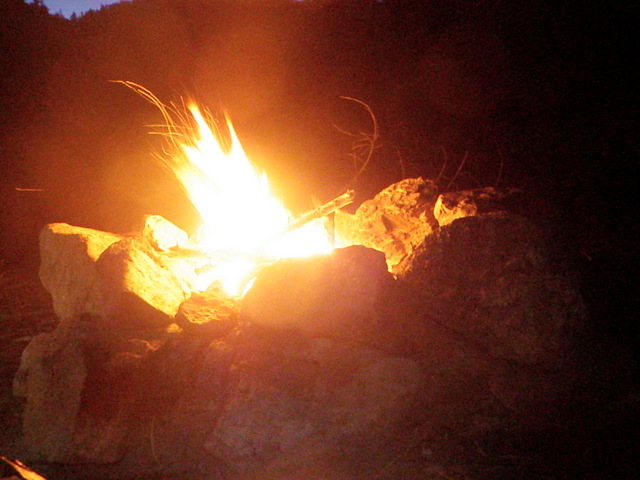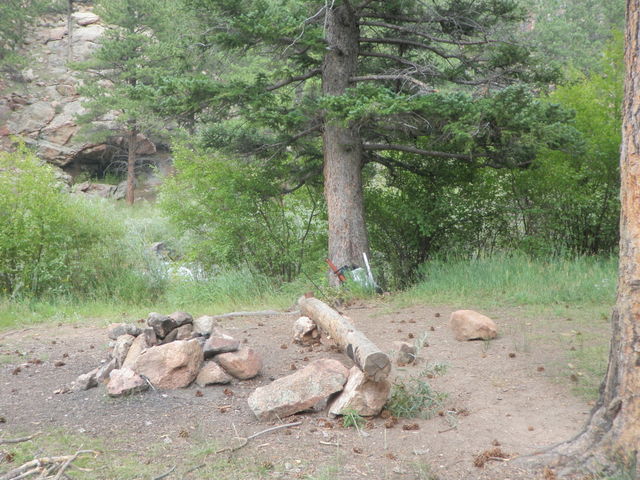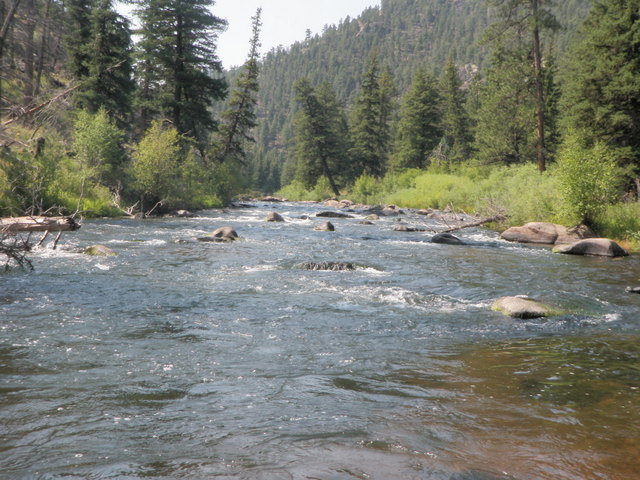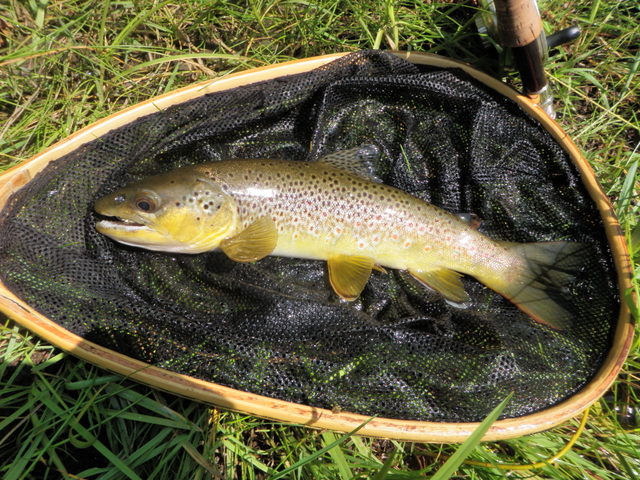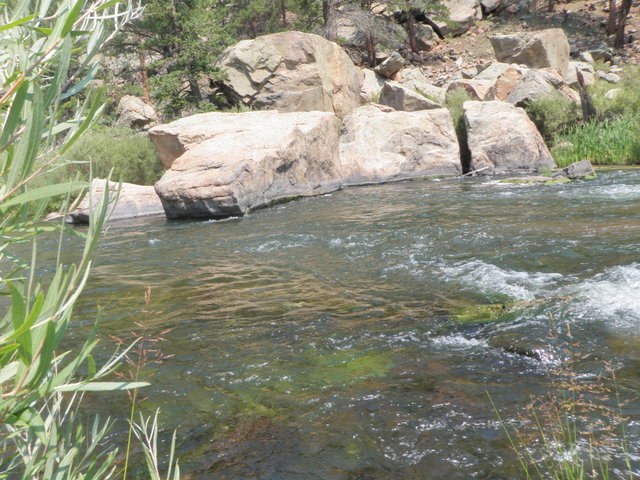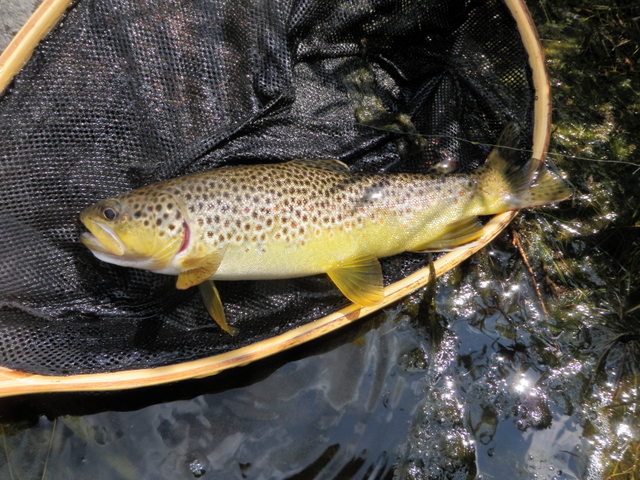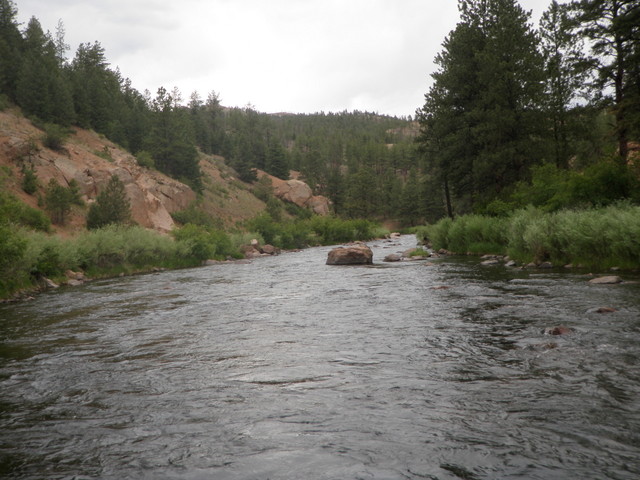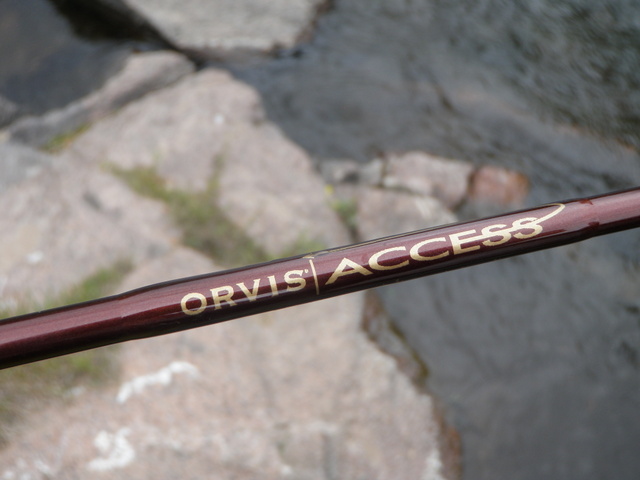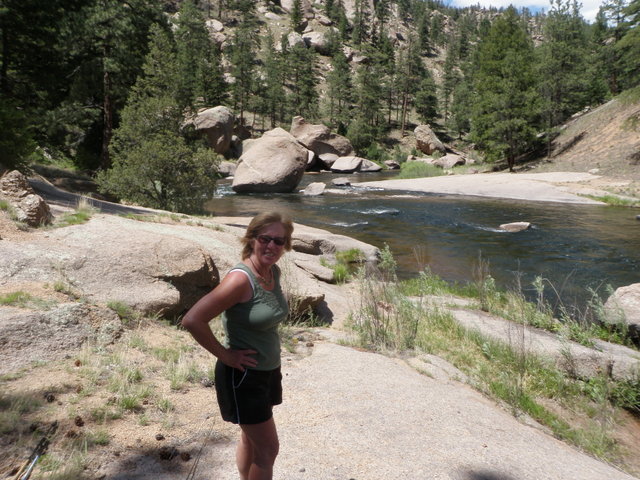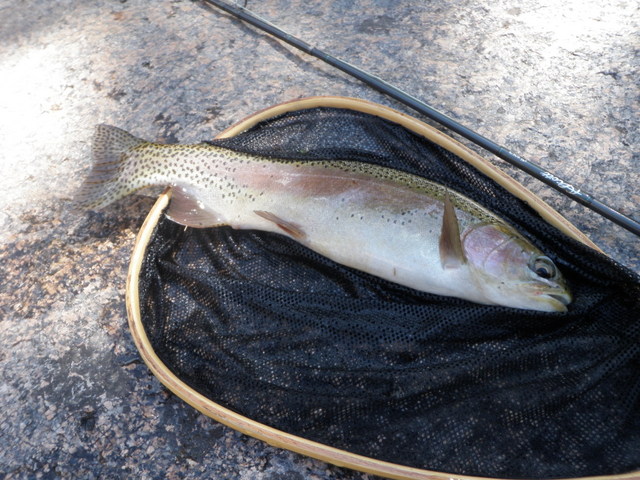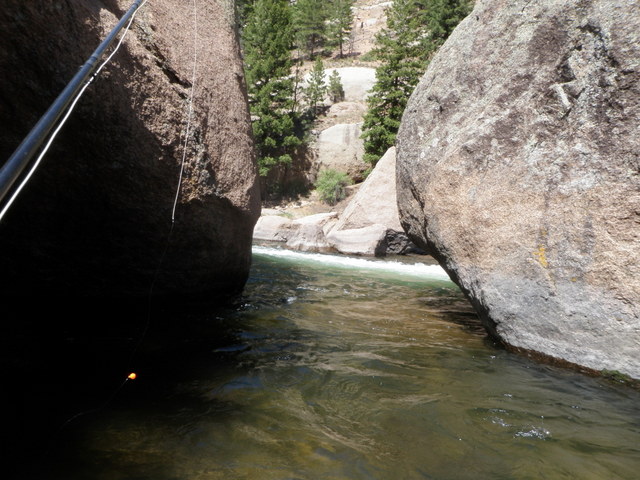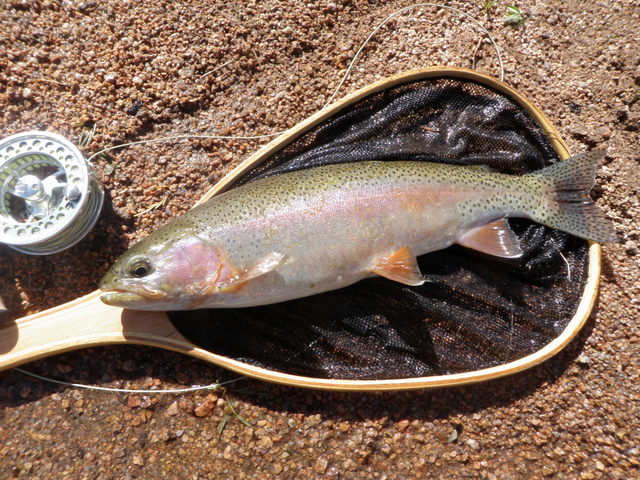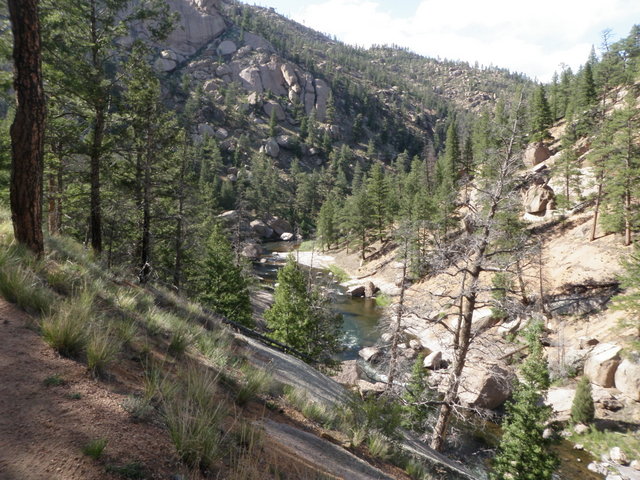Time: 11:30AM – 4:00PM
Location: Area around Nighthawk and then between Osprey Campground and Scraggy View
Fish Landed: 2
South Platte River 11/03/2013 Photo Album
November is typically a tough month for fly fishing, although occasional fair weather can offer some decent action. Highs for Denver were projected to be in the upper 60’s on Sunday November 3, and I knew there weren’t many more opportunities remaining in 2013, so I planned a fishing trip. Jane picked up a nasty cold early in the week, and I woke up on Sunday suspecting that the bug had somehow transferred to my body, but once I experienced the sunshine and warm temperatures, I couldn’t resist making a fishing trip.
I considered Clear Creek Canyon, Waterton Canyon, and the South Platte River below Deckers. The flows below Strontia Springs in Waterton Canyon were only 40 cfs, and that is extremely low and suggests very tough fishing so I removed that option from my list. The South Platte River below Cheesman Canyon was flowing at 110 cfs and that is on the low side but not impossible. I’d been to Clear Creek Canyon on Thursday, and I knew the narrow canyon walls would block the sun so it could be chilly even with Denver air temperatures in the upper 60’s. The South Platte River below Deckers on the other hand is a wide open stretch of water that soaks up a lot of sunshine. The South Platte was my choice for Sunday.
I left the house at 10AM and by 11:15 arrived at the large parking lot across from the river just downstream from the junction of Nighthawk road and the road that goes along the South Platte River. I quickly pulled on my waders and put together my Loomis five weight and entered the water directly across from where I parked. Another fisherman was in the pool thirty yards below me so I began working my way upstream. I began with a Chernobyl ant, beadhead hares ear and beadhead RS2. The reports I read suggested that BWO’s and tricos were still hatching so I expected to have action on the RS2.
After a few prospecting casts I spotted a nice brown positioned to my left and eight feet upstream. I began casting above the fish and allowed my three flies to drift over the fish and on the third pass I noticed the fish make a slight move so I set the hook. Instantaneously the fish rocketed upstream and began stripping line from my reel so I allowed the handle to spin and waited to gain some control. After a 25 foot sprint directly upstream the fish made a quick turn and instantly my line was limp. I reeled up my line and discovered that the hares ear and RS2 had broken off. I’m not sure if I had the fish hooked in the mouth or foul hooked but any fish that can streak that fast is usually foul hooked.
I took a deep breath and tied another hares ear and RS2 below my Chernobyl and moved on along the left bank and around a bend in the river. I was covering deep attractive areas in the middle of the river quickly as I felt most of the fish would be along the bank. After turning the bend I waded across some shallow riffles and approached some attractive runs and pockets along the north bank. The lower deep runs did not yield any action so I moved up 25 feet to a spot where the river runs along a large rock and log and then creates a small pocket before spilling over some large rocks. Here I spotted a refusal to the Chernobyl, and then I observed the same fish rising two or three times to something tiny on the surface. It was about the time when trico spinners might hit the water, but I decided to try a CDC BWO first, and this tiny fly did in fact arouse another refusal. Unfortunately I tried to place a subsequent cast tight to the log and then allowed it to drift deep into the pocket and snagged a submerged branch. In my effort to save the fly I disturbed the tiny pocket and put down the fish so I decided to return to the car and take my lunch break. It was 12:15 as I crossed the river again and then walked back along the bank to the road and back to the Santa Fe.
Another SUV had arrived and parked next to me and a couple were fishing in the area where I began in the morning. As I ate my lunch, the fisherman who was below me when I began walked by and I didn’t pay much attention to this circumstance. After lunch I put on my frontpack and backpack and returned to the spot where I’d exited for lunch, and I was anxiously anticipating working upstream through some additional juicy pockets and runs along the north bank. Unfortunately I discovered that the fisherman who walked by the car while I ate lunch was now positioned across from a deep run no more than 15 yards above where I wanted to fish. I didn’t feel it was proper etiquette to resume fishing where I’d quit as I would have been crowding the upstream fisherman, so I returned to the car and drove up along the river to another spot.
The spot I chose was either a campground or picnic ground and it was the next parking area after Osprey Campground. Another SUV was already parked here and two fishermen were preparing to fish, so I hastily grabbed my gear and walked down the road 100 yards or so and entered the river a short distance below the road. I began prospecting my way upstream along the left bank next to the road and after covering thirty yards, I lifted the flies to recast and felt weight so I set the hook and a twelve inch brown launched itself out of the river. I played the strong fighter for 15 seconds and it swam under a branch that was lodged in front of a large exposed boulder. I didn’t see the branch from my downstream vantage point so I didn’t attempt to prevent the escape move. Unfortunately it worked for the brown trout, and when I waded closer and unhooked the Chernobyl I discovered that two more flies were missing along with the fish.
I screamed and uttered some choice words and tied on another pair of nymphs and then worked upstream further. The wind really kicked up at this point and I was having great difficulty punching casts upstream. I covered quite a bit of real estate and came to a shallow smooth stretch of water and I could spot two fish hugging the bottom in the clear two foot deep water. I decided to clip off the three fly set up and tie on a CDC BWO again, but by the time I did this, the lower fish disappeared. I did spot a subtle rise along the subsurface weed bed further upstream so I shot some casts to that vicinity, but these casts proved fruitless and I never saw another rise. I was pretty frustrated at this point with the loss of two fish, the lack of action, the wind and the nondescript smooth shallow water that was ahead of me so I climbed the gradual bank and returned to the car. On top of all this frustration I now noticed that a campground host had come by and put a fee envelope on my windshield.
I now noticed that I parked in a fee area and there was a tube in the parking area to deposit payment. The host had filled in my envelope for me and I quickly discovered that I owed $6 for a day use fee. I checked my wallet and of course I only had twenties plus four ones. I was about to put the four ones in the envelope when I noticed there was a space to enter my senior pass number. Whether it was proper or not, I assumed that the senior pass entitled me to a 50% discount, so I entered my senior pass number and deposited three ones in the envelope.
I now decided to drive further upstream, but after covering a couple miles and noticing that all the pullouts had one or two vehicles and numerous fishermen, I did a U-turn and drove back toward the Nighthawk Road junction. I was still in my waders so I needed to find a parking spot to remove them, so I pulled into the lot directly across from Nighthawk Road. There were no vehicles in the parking lot so I decided to return to my exit point for lunch and resume fishing upstream. I still had the CDC BWO on my line so I made some downstream casts to the exact spot where I’d experienced refusals just before lunch, but in the late afternoon the BWO didn’t even generate a look. With the wind and sun glare it was very difficult to see the tiny fly so I reverted to the three fly setup; Chernobyl ant, beadhead hares ear and RS2.
I cast the three fly combo across and let it drift through the small pocket at the end of the run and on the third or fourth pass a fish grabbed the trailing RS2. This fish put up a strong fight and I played it cautiously as I didn’t want to lose another prize catch. Eventually I was able to lift the nose of a nice 13 inch rainbow above the surface and slid my net beneath the first catch of the day.
Some additional nice water remained along the bank for another forty feet before the ledge rock next to a deep run that generally holds several fish. I carefully covered this water and in another short deep pocket the Chernobyl dipped and I set the hook and fought and landed another mirror image rainbow. My day was suddenly looking up and I was anticipating continuing my progress upstream and along the north and then west bank. But as this was going on two fishermen appeared and entered the river directly across from the ledge rock! I fished out the pockets but when I was within 15 yards I waded back across the river and circled around and above the pair of young fishermen.
When I came back to the river I was above a 90 degree bend and now the sun was quite low in the western sky and shining directly into my eyes. I crossed to the opposite bank so the sun was at my back, but this created a difficult glare and it was hard to read the water depth. I made a few futile casts to no avail and then crossed back toward the parking lot and walked up the path along the river quite a distance. The water in this area was wide and shallow and largely unattractive to me so after hiking 200 yards or so and making a few half hearted casts in the right channel next to an island, I reeled up my line and decided to call it a day.
I was quite pleased to avoid a skunking and land two decent rainbows late in the day. It was still a gorgeous day for early November and I’ll relish any late season action as a bonus for 2013.


